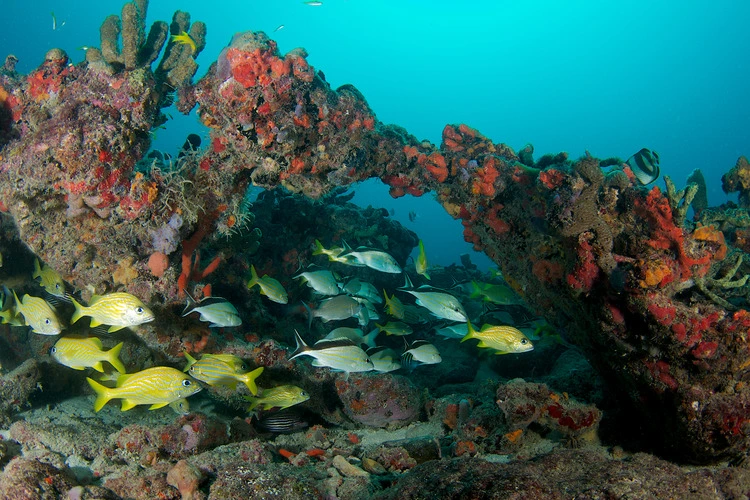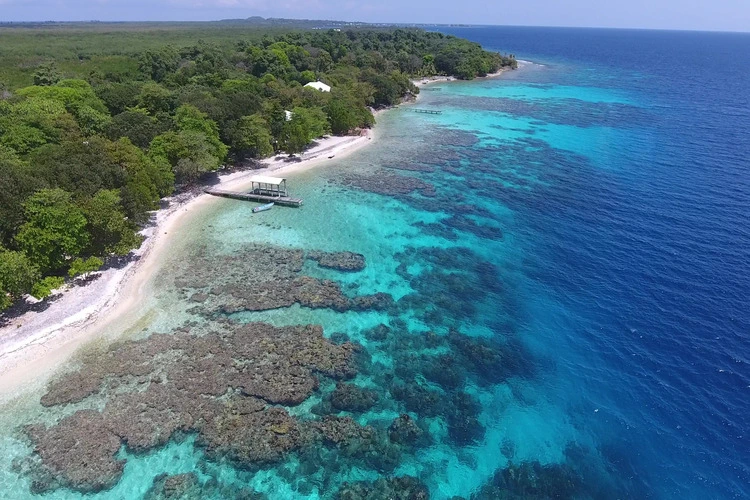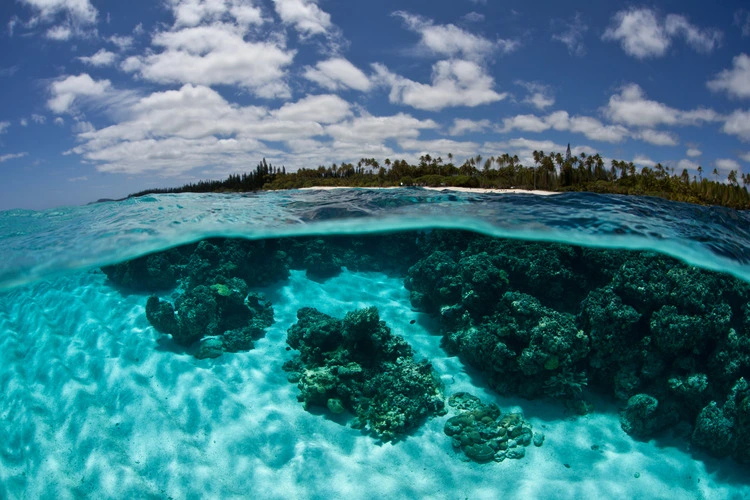
From Florida to Australia, discover where the world’s biggest coral reefs are & why their existence is so vital to our planet
By
Earlier this week, the world’s largest coral – so large that it is visible from space – was discovered in the southwest Pacific Ocean. This mighty coral has been making headlines, growing uninterrupted from polyps and multiplying million-fold to produce the huge organism hosting shrimp, fish, crabs and other species.
This is the impact that just one coral can have in our oceans. When coral colonies combine together, the scale can be of even greater proportions, forming vast coral reefs bigger than entire countries that teem with marine life.
So, where exactly are these reefs found?
Here we uncover the top five biggest coral reefs, according to their total length, in reverse order:
5. Florida Reef – 350 miles (560km)

The Florida Reef is the only coral reef system in continental US, stretching from Dry Tortugas National Park west of the Florida Keys to the St. Lucie Inlet in Martin County.
Florida Reef has a sizeable impact on the tourism industry, supporting more than 71,000 jobs and generating $6.3 billion in tourism each year, thanks to activities like diving, fishing and snorkelling.
Enjoying this article? Check out our related reads:
- COP29: More than 40 per cent of coral species face extinction
- Geo explainer: The threats to coral reefs
- Scientists discover how coral skeletons can harm reefs in world oceans
- Restoring oyster reefs to protect English waters
Since the late 1970s, the reef has seen a decline in its healthy coral by 90 per cent, due to a combination of factors from disease and heat stress to damage from boats and natural disasters including hurricanes. In particular, a disease known as Stony Coral Tissue Loss Disease – also dubbed ‘white syndrome’ – has killed more than 20 coral species on Florida’s reefs in the last decade alone.
Its exact cause is unknown, but the impact of white syndrome is significant: once a coral colony catches it, it is almost 100 per cent fatal.
4. The Mesoamerican Barrier Reef – 625 miles (1,006km)

At number four is the Mesoamerican Barrier Reef – also known as the Great Mayan Reef – spanning the eastern coasts of Honduras, Guatemala, Belize and Mexico. Home to more than 65 species of stony coral and 500 species of fish, the reef is vital for the survival of many organisms, including the world’s largest population of manatees and mammoth whale sharks.
Nearly two million people depend on the reef for their livelihood, but increased tourism also brings about unwelcome environmental consequences, like increased pollution and heightened interaction – and often damage – to the reef. The process of dredging to create more land is also destroying mangrove forests, vital to protect juvenile fishes and protect the shoreline.
To combat this, the Mesoamerican Reef Tourism Initiative (MARTI) was developed to ensure the tourism industry grows in a sustainable way, where business practices do not butt heads with the specific ecological needs of the reef.
3. New Caledonia Barrier Reef – 930 miles (1,500km)

The New Caledonia Barrier Reef is made up of six marine clusters in the South Pacific Ocean, featuring a huge scope of underwater species – totalling more than 9,300 – as well as habitats including seagrass meadows and mangrove forests. Endangered species like manta rays, humpback whales and sea snakes have all been found in the New Caledonia Barrier Reef too.
The waters that surround the reef are home to seamounts and the Fosse des Nouvelles-Hébrides subduction trench that reaches depths of more than 4.4 miles (7.1 km).
Since 2014, the New Caledonia government has been working with organisations, businesses, scientists and charities to create a more-detailed plan of protecting the reef. It is already protected under the Natural Park of the Coral Sea, but has faced criticism since policing the reef’s vast area is virtually impossible. New Caledonia relies on just a handful of French ships to patrol an area three times the size of Germany, making the prevention of illegal activities – such as fishing – very difficult.
2. Red Sea Coral Reef – 1,240 miles (2,000km)
At number three is the Red Sea Reef, which extends across the coastlines of Egypt, Sudan and Eritrea.
Compared to other reefs in the world, the Red Sea Reef has a higher salinity and water temperature. This unique combination lends itself to the region’s high levels of endemism – it is thought that as much as 14 per cent of its 1,100 species of fish and 200 coral are found nowhere else in the world.
Because of these corals’ existing ability to thrive in high temperatures – particularly those found in the Gulf of Aqaba – scientists predict that the Red Sea Reef may be one of the planet’s last-surviving reef ecosystems, as climate change continues to warm our planet’s oceans.
Ensuring their survival is also pivotal if scientists want to undertake further research on the reef to understand exactly how these corals withstand marine heatwaves, and consequently mass bleaching.
1. Great Barrier Reef – 1,429 miles (2,300km)
At number one is the Great Barrier Reef, containing the world’s largest collection of coral reefs. A staggering 400 types of coral, 1,500 species of fish and 4,000 types of mollusc call this ecosystem – which is larger than New Zealand – their home, making it one of the most biodiverse places on the planet.
Covering an area equivalent to 70 million football fields, so vast is the Great Barrier Reef that it is even visible from space, where the reef structures form a ‘string’ across Australia’s northeast coast.
In 1981, the Great Barrier Reef was declared a World Heritage Area, but it has since faced increasing pressure from the threat of climate change, poor water quality, coastal development and illegal fishing. Improving the reef’s health has been a major focus of the Australian and Queensland Governments, with the Reef 2050 Plan devised to create a long-term plan to limit the impacts of climate change, land and water-based activities
Already, steps have been taken in the right direction with both governments committing $160 million to remove gillnets from the reef by June 2027 – with licences to use them eventually phased out. As well as this, Queensland’s ban on single-use plastic in recent years has seen the removal of cotton buds, plastic takeaway containers, plastic microbeads and heavyweight plastic bags, all of which helps to reduce the quantity of marine debris in the reef.




